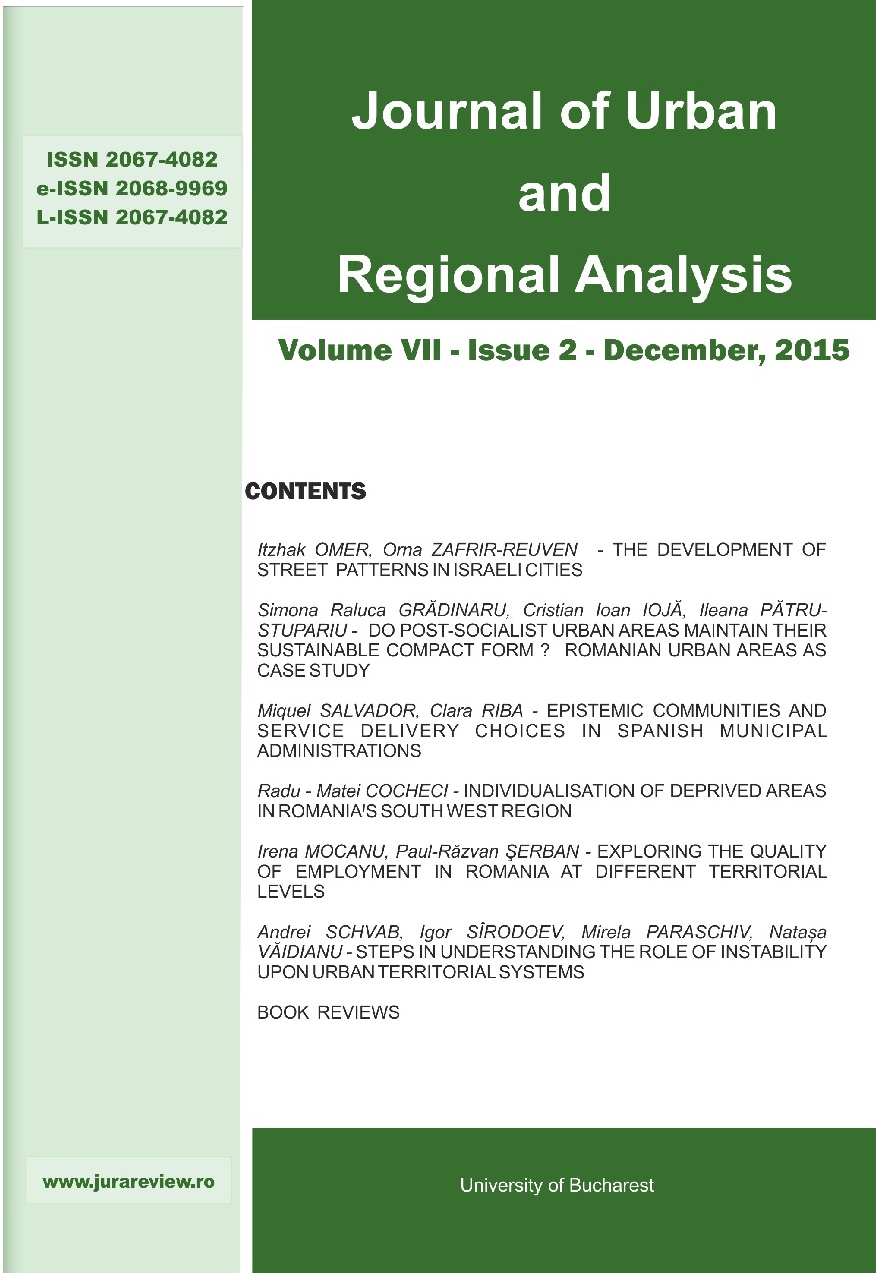DO POST-SOCIALIST URBAN AREAS MAINTAIN THEIR SUSTAINABLE COMPACT FORM? ROMANIAN URBAN AREAS AS CASE STUDY
DO POST-SOCIALIST URBAN AREAS MAINTAIN THEIR SUSTAINABLE COMPACT FORM? ROMANIAN URBAN AREAS AS CASE STUDY
Author(s): Simona Raluca Grădinaru, Cristian Ioan Iojă, Ileana Pătru-StupariuSubject(s): Recent History (1900 till today), Policy, planning, forecast and speculation, Rural and urban sociology, Economic development, Environmental interactions, EU-Approach / EU-Accession / EU-Development
Published by: Editura Universitară
Keywords: compactness; development level of urban areas; functional areas; horizontal planning;
Summary/Abstract: The compact city is regarded as an important concept in promoting sustainable development, especially within the European Union. The socialist urban planning system maintained a high compactness of the urban areas through almost exclusive predominance of the public sector in housing provision, and ideological nature of the planning strategies. After the 1990’s, the administrative decentralization allowed local authorities to adopt particular urban development strategies. However, development was directly influenced by the importance of the urban administrative centre. The aim of the paper is to determine if post-socialist urban areas maintained their compact urban form or they encountered different evolution trajectories. We determined the type of changes by calculating urban form indicators at two time moments: 1990 and 2006. Furthermore, the two-way repeated-measurement ANOVA was used to identify significant changes, and to assess the effect of the development level of the urban area on the variance of form indicators. The results show that Romanian post-socialist urban areas either shifted from the compact form, "inherited" after the collapse of socialism, to more dispersed patterns, either expanded in a compact manner. Moreover, as development level got higher, urban areas were more likely to be affected by suburbanization and periurbanization. In order to respond to these challenges, new instruments such as setting of metropolitan areas or spatial framework plans could be used. Furthermore, planning should be adapted to local circumstances and to the different development trajectories of big and mid-sized urban areas.
Journal: Journal of Urban and Regional Analysis
- Issue Year: 7/2015
- Issue No: 2
- Page Range: 129-144
- Page Count: 16
- Language: English

